Tamim Niazi
Deep radiomic signature with immune cell markers predicts the survival of glioma patients
Jun 09, 2022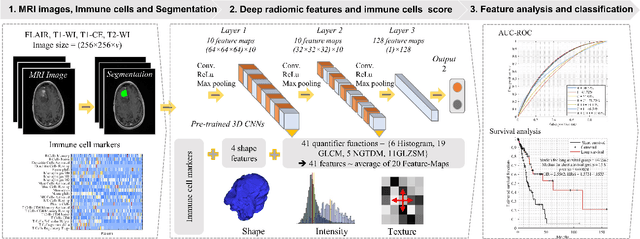
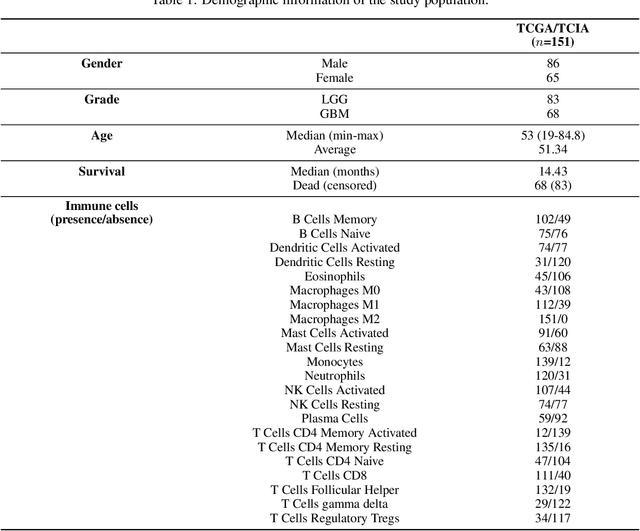
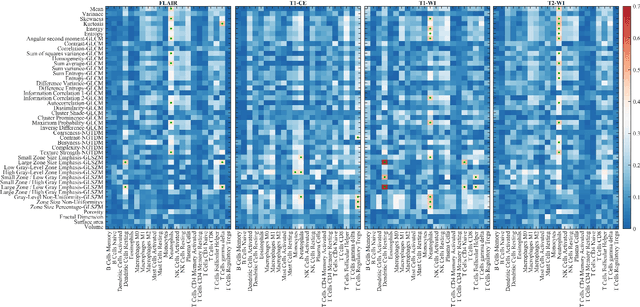
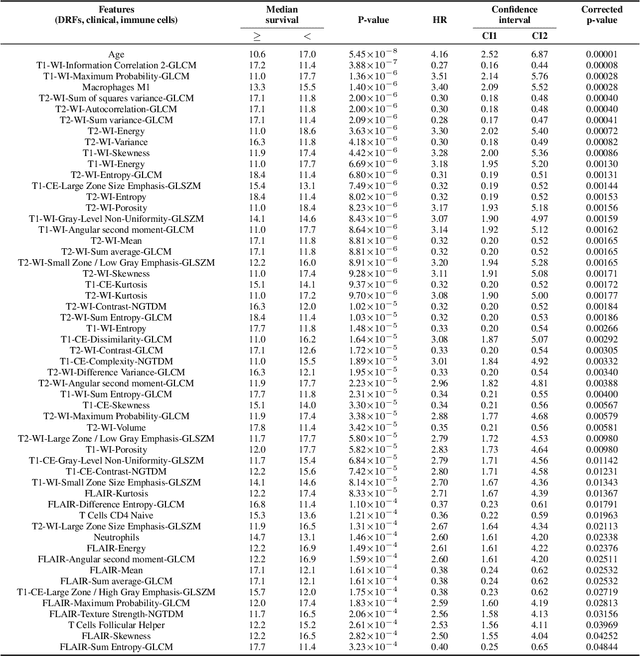
Abstract:Imaging biomarkers offer a non-invasive way to predict the response of immunotherapy prior to treatment. In this work, we propose a novel type of deep radiomic features (DRFs) computed from a convolutional neural network (CNN), which capture tumor characteristics related to immune cell markers and overall survival. Our study uses four MRI sequences (T1-weighted, T1-weighted post-contrast, T2-weighted and FLAIR) with corresponding immune cell markers of 151 patients with brain tumor. The proposed method extracts a total of 180 DRFs by aggregating the activation maps of a pre-trained 3D-CNN within labeled tumor regions of MRI scans. These features offer a compact, yet powerful representation of regional texture encoding tissue heterogeneity. A comprehensive set of experiments is performed to assess the relationship between the proposed DRFs and immune cell markers, and measure their association with overall survival. Results show a high correlation between DRFs and various markers, as well as significant differences between patients grouped based on these markers. Moreover, combining DRFs, clinical features and immune cell markers as input to a random forest classifier helps discriminate between short and long survival outcomes, with AUC of 72\% and p=2.36$\times$10$^{-5}$. These results demonstrate the usefulness of proposed DRFs as non-invasive biomarker for predicting treatment response in patients with brain tumors.
Can autism be diagnosed with AI?
Jun 05, 2022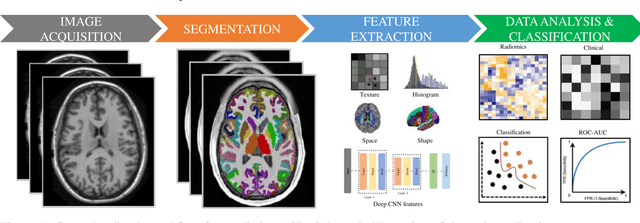
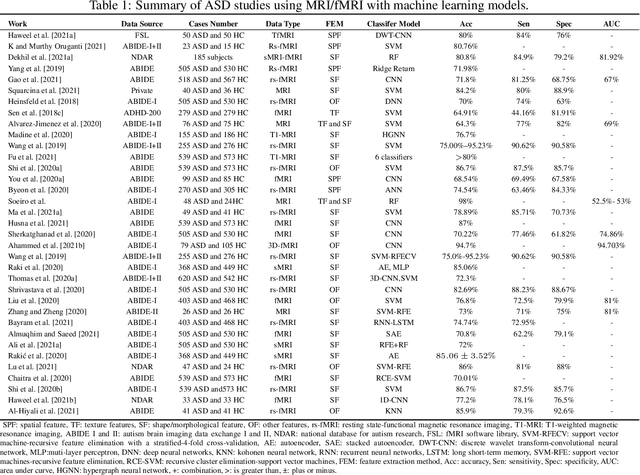

Abstract:Radiomics with deep learning models have become popular in computer-aided diagnosis and have outperformed human experts on many clinical tasks. Specifically, radiomic models based on artificial intelligence (AI) are using medical data (i.e., images, molecular data, clinical variables, etc.) for predicting clinical tasks like Autism Spectrum Disorder (ASD). In this review, we summarized and discussed the radiomic techniques used for ASD analysis. Currently, the limited radiomic work of ASD is related to variation of morphological features of brain thickness that is different from texture analysis. These techniques are based on imaging shape features that can be used with predictive models for predicting ASD. This review explores the progress of ASD-based radiomics with a brief description of ASD and the current non-invasive technique used to classify between ASD and Healthy Control (HC) subjects. With AI, new radiomic models using the deep learning techniques will be also described. To consider the texture analysis with deep CNNs, more investigations are suggested to be integrated with additional validation steps on various MRI sites.
Modeling of Textures to Predict Immune Cell Status and Survival of Brain Tumour Patients
Jun 04, 2022
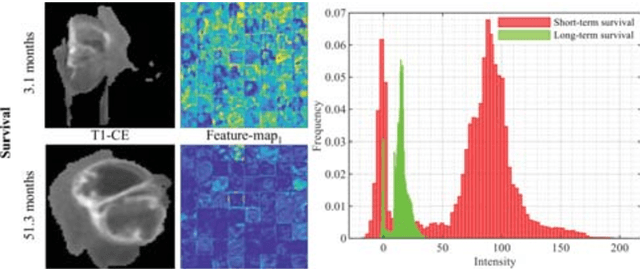
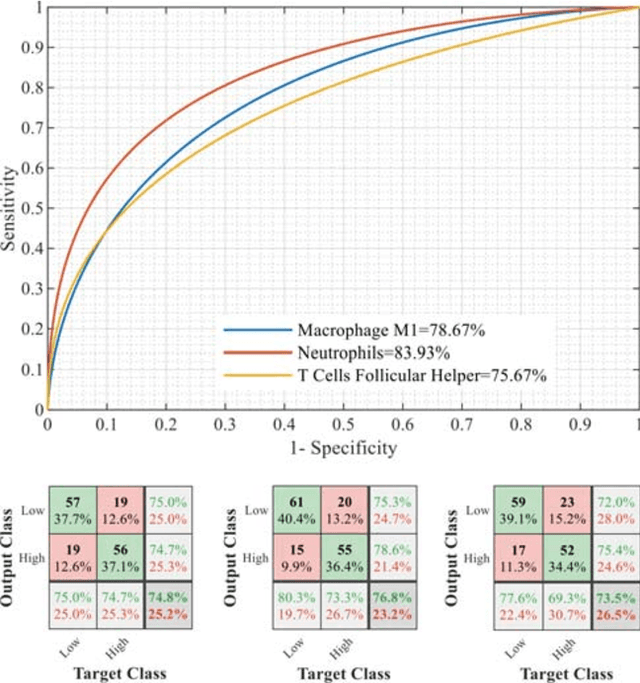
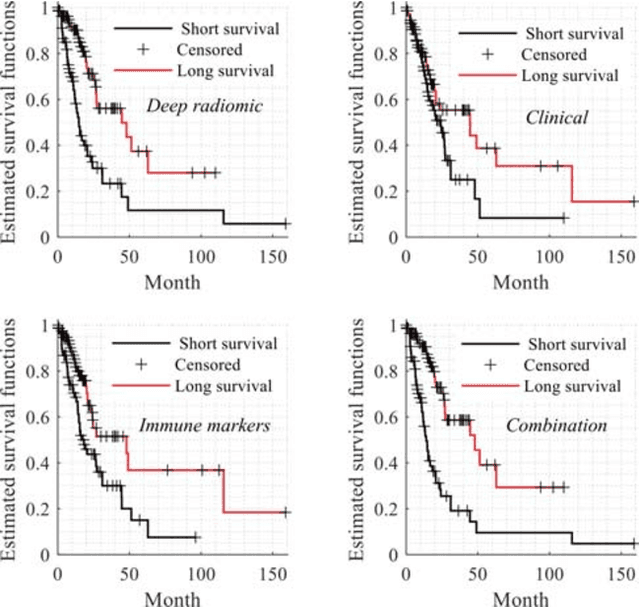
Abstract:Radiomics has shown a capability for different types of cancers such as glioma to predict the clinical outcome. It can have a non-invasive means of evaluating the immunotherapy response prior to treatment. However, the use of deep convolutional neural networks (CNNs)-based radiomics requires large training image sets. To avoid this problem, we investigate a new imaging features that model distribution with a Gaussian mixture model (GMM) of learned 3D CNN features. Using these deep radiomic features (DRFs), we aim to predict the immune marker status (low versus high) and overall survival for glioma patients. We extract the DRFs by aggregating the activation maps of a pre-trained 3D-CNN within labeled tumor regions of MRI scans that corresponded immune markers of 151 patients. Our experiments are performed to assess the relationship between the proposed DRFs, three immune cell markers (Macrophage M1, Neutrophils and T Cells Follicular Helper), and measure their association with overall survival. Using the random forest (RF) model, DRFs was able to predict the immune marker status with area under the ROC curve (AUC) of 78.67, 83.93 and 75.67\% for Macrophage M1, Neutrophils and T Cells Follicular Helper, respectively. Combined the immune markers with DRFs and clinical variables, Kaplan-Meier estimator and Log-rank test achieved the most significant difference between predicted groups of patients (short-term versus long-term survival) with p\,=\,4.31$\times$10$^{-7}$ compared to p\,=\,0.03 for Immune cell markers, p\,=\,0.07 for clinical variables , and p\,=\,1.45$\times$10$^{-5}$ for DRFs. Our findings indicate that the proposed features (DRFs) used in RF models may significantly consider prognosticating patients with brain tumour prior to surgery through regularly acquired imaging data.
Deep radiomic features from MRI scans predict survival outcome of recurrent glioblastoma
Nov 15, 2019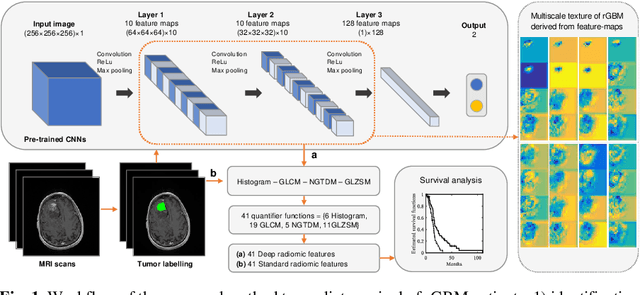
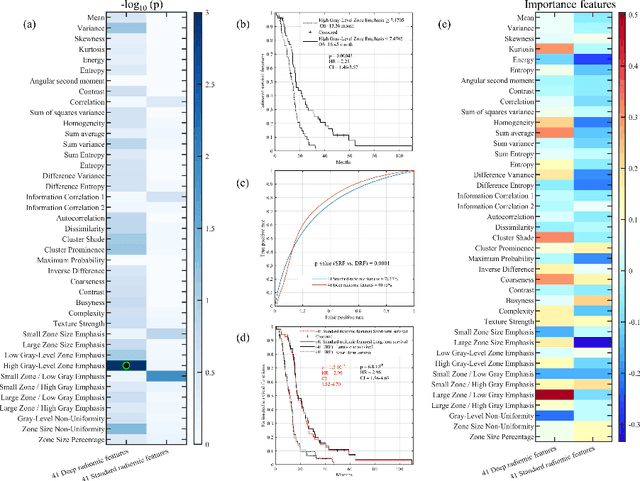
Abstract:This paper proposes to use deep radiomic features (DRFs) from a convolutional neural network (CNN) to model fine-grained texture signatures in the radiomic analysis of recurrent glioblastoma (rGBM). We use DRFs to predict survival of rGBM patients with preoperative T1-weighted post-contrast MR images (n=100). DRFs are extracted from regions of interest labelled by a radiation oncologist and used to compare between short-term and long-term survival patient groups. Random forest (RF) classification is employed to predict survival outcome (i.e., short or long survival), as well as to identify highly group-informative descriptors. Classification using DRFs results in an area under the ROC curve (AUC) of 89.15% (p<0.01) in predicting rGBM patient survival, compared to 78.07% (p<0.01) when using standard radiomic features (SRF). These results indicate the potential of DRFs as a prognostic marker for patients with rGBM.
 Add to Chrome
Add to Chrome Add to Firefox
Add to Firefox Add to Edge
Add to Edge